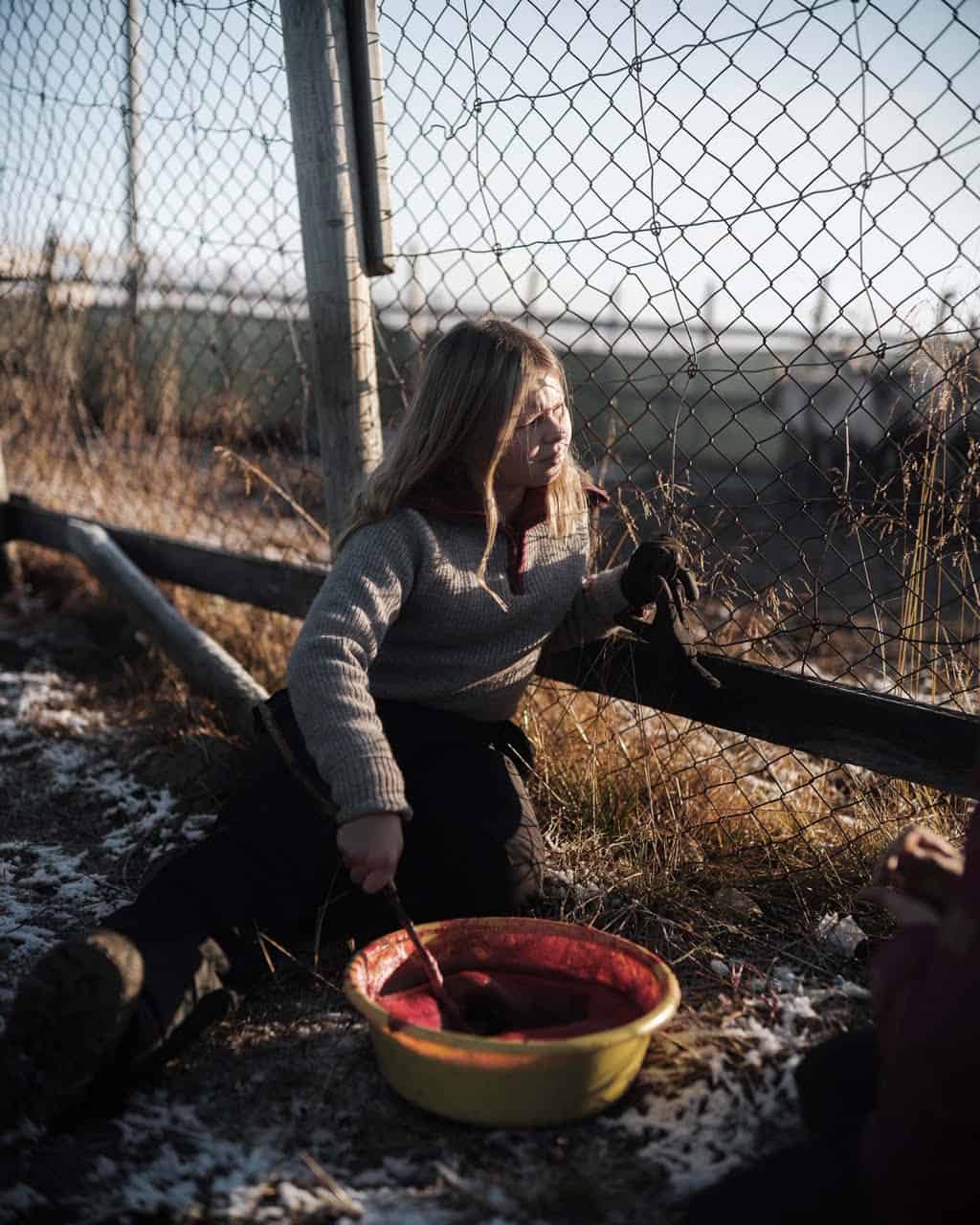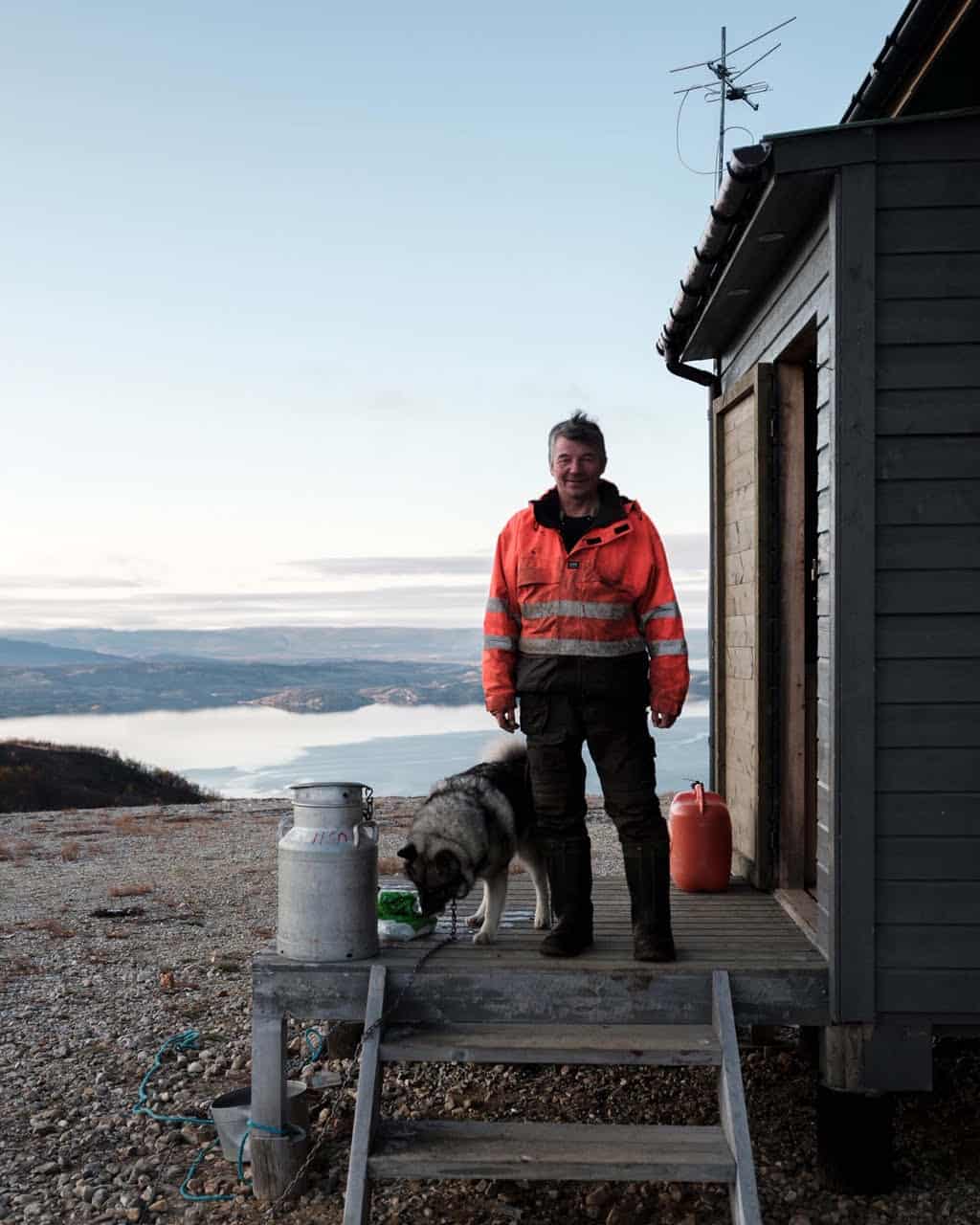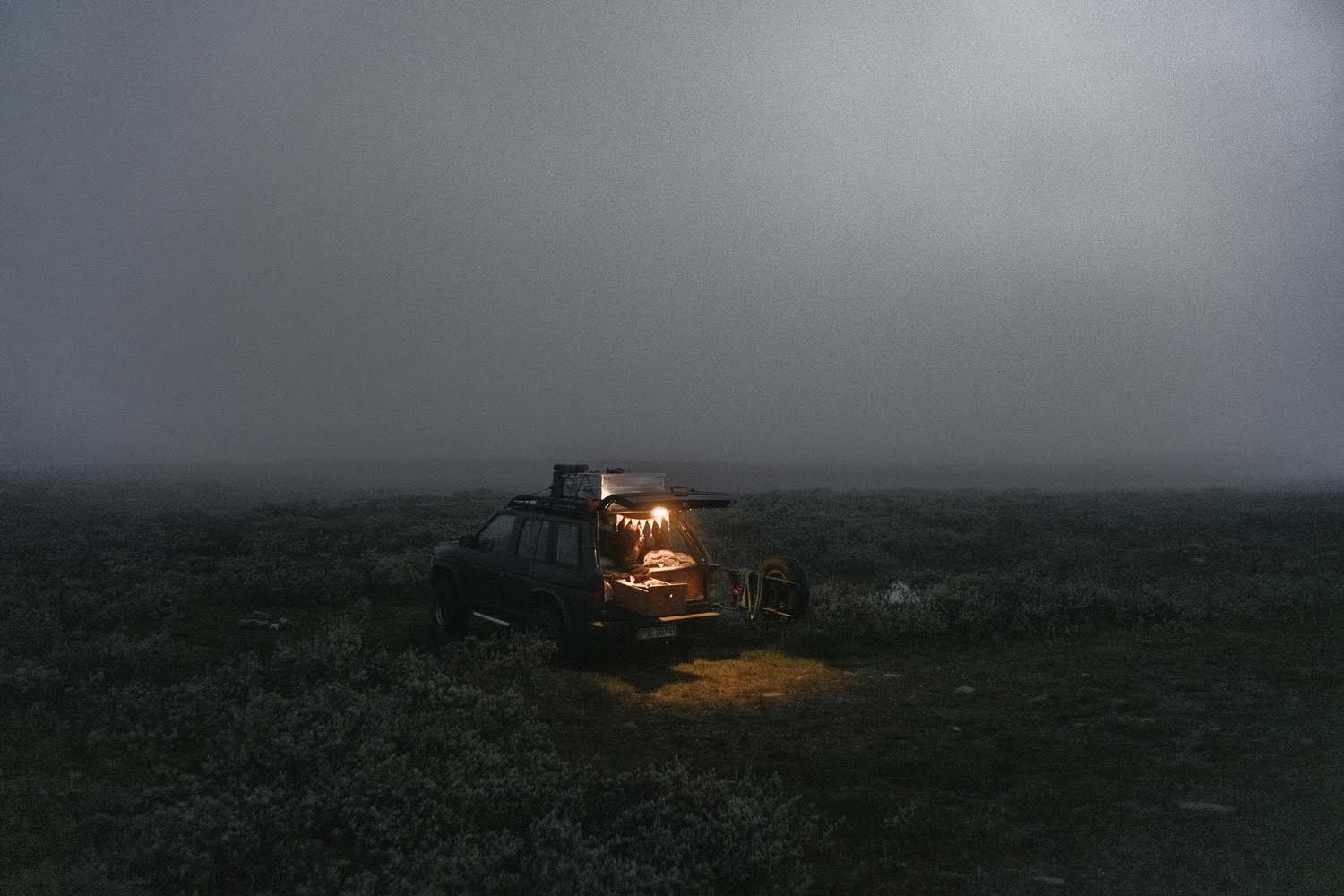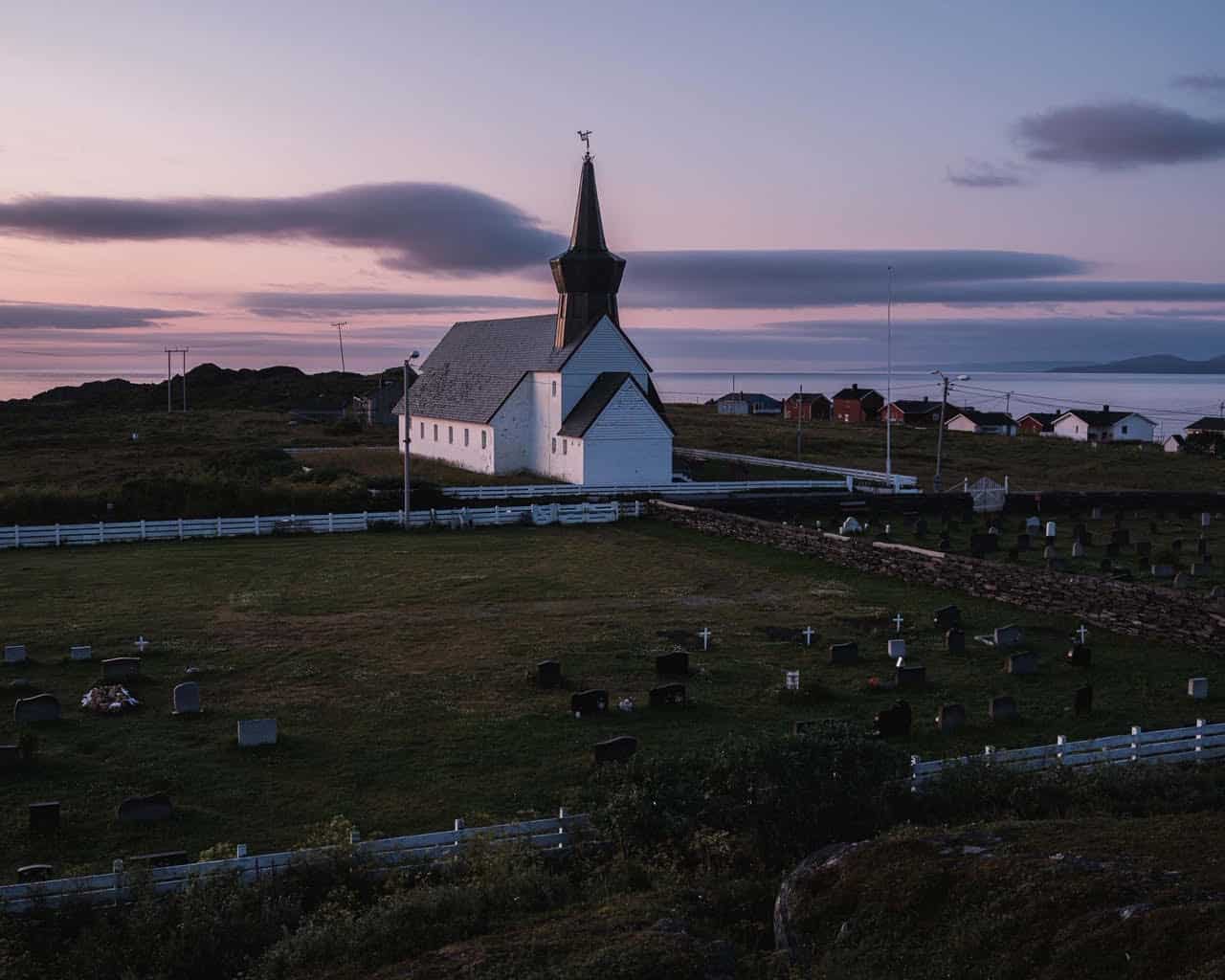Helena Postawka – Lech: Your first project entitled “Alexander” focused on Macedonia and its transformations. Now, your journey takes you into the northernmost arctic regions of Norway. Why did you choose this direction?
Michał Siarek: Norway is my second home. A journey to the deep north means that I get to return to my origins, extremely outdoorsy origins if I might add. Allow me to go way back. Once a year, I settle down for a while, get an ordinary job and earn money which I need to do my thing. It’s a great opportunity to be alone with your thoughts. Truth be told, I enjoy manual labor immensely because it allows me to stay mostly outdoors. Near Oslo, I met an elderly lady around the time I’d just started working on “Alexander” (Michał Siarek’s first project; http://www.alexander.michalsiarek.com/ – author’s note). My friends and I were renovating one of her houses for over two years. I also did some jobs on the side – that’s how I financed “Alexander.” It made an enormous difference as far as my pace and working conditions were concerned – I had all the time in world to just focus on my project.
HPL: Still, thousands of kilometers separate Oslo from the actual place you stayed in for a couple of months to work on your new project. How did you end up there?
MS: By accident, at first. The information about my stay in Norway spread by word-of-mouth among my friends – at some point I found myself in a cottage on a tiny island. Though it sounds like a huge overstatement to describe a twenty square-meters shack with no running water nor electricity as ‘a cottage.’ It’s the perfect refuge for us, as well as a number of our photographer friends, who also stay there. One of these colleagues was offered a permanent position and decided to settle down in the north for good. Soon, I had to start working on my graduate art project and a book (accompanying “Alexander” – HPL). I realized it was the time for me to go back. The shortest route to Finland, and the location of my exhibition opening, turned out to lead through the northernmost terrains I clearly knew nothing about. I could take my time observing the scene, meandering around obscure locations, reading. Once I’d reached the tundra, a return to the city was out of the question. The first thing I saw when I arrived to Mehamn was a graveyard, right next to it an airport, main village, the final road north of the continent, and the rocky coastline. Afterwards, I was amazed by the stories of refugees who travelled here from Russia.

photo: Wiktor Bruchal
HPL: Was it the moment you decided it was a great material for a project?
MS: I tried to get in touch with the local authorities to inquire about their cultural projects, get my foot in the door and perhaps come back later, after doing more research. I had nothing specific in mind at that point. Anyway, a person in-charge died a year or two before my visit, a classic case of bad timing. Their residency programme dedicated to artists and scientists had already been cancelled. Still, I managed to contact several people. I photographed a woman and her children in a small alley – on their way back, carrying baskets – but all you can see in the picture are their silhouettes against the backdrop of the sunset, what a cliché. The following day I found out she owned a shop, so we struck up a conversation. That’s how I learned that ten years ago this town, which currently has two hundred citizens, was teetering on the verge of closure. If the plan to shut down the school had been successful, new young residents would’ve never decided to put down roots in this town. Consequently, authorities would’ve dispensed with road maintenance, which means that the passage would’ve been blocked by snow, and that’s it, really. She and her husband are both very well-educated people who came back here for the sake of their children. She opened a store, he got the job as a port manager. They’re the heart and soul of this community.
Michałek Siarek, “Good news from the North”
Michałek Siarek, “Good news from the North”
HPL: You also came back.
MS: And after I did, I gained a deeper insight into the Arctic region in general, its socio-political contexts, its militarization, muscle flexing in the north, fossil fuels as well as the green energy. This year, I spent a couple of months observing the north first-hand, asking questions on such fascinating issues as the migration, climate change or disintegration of local communities. Besides I’d been longing to tackle the subject that would require me to stay close to nature. At first, all I had was a fairly vague concept. I didn’t even know how long I would travel around the Arctic. Assuming I would find myself more often than not way off the beaten track, I customized my off-road vehicle and had it converted into a mobile studio and lodgings. I didn’t plan to stay for the winter. When I returned to the peninsula, the shop owner, who at that point was a good friend of mine, referred me to a local activist, a guy who believed in this place even though he wasn’t one of the locals, and moved here for a woman’s love. Undeterred by the pressure to centralize Finnmark and reduce spending, he and the rest of the community keep fighting to increase awareness and protection of their town. In a way, Gamvik could be considered the exception to a rule – due to the global warming it experiences a rapid growth in population in lieu of shortage. I suppose it’s a blessing in disguise. The local industry is thriving ever since fish are migrating toward cooler waters nearer the northern peninsula. On the other hand, the industry needs roads and electricity that have an impact on the environment. There’re two possible versions of the future: Gamvik can either develop further into the industrial center or disappear underwater. Though here and now, the wish to be remembered spurs local citizens to action. They don’t want to be forgotten like other villages in the north.
HPL: Tell us more about this potential, did you come across anything interesting?
MS: I continued to pore over the northern investments pertaining to the opening of the Northern Sea Route, railway construction etc. Amid the current shifts in the Arctic region, each of the eight Arctic Nations develops its own policy on development and environmental protection. For instance Norway’s Arctic Strategy details the local economy’s transition into the IT sector, especially services and data storage. As I delved deeper into the selected issues, I realized that we are standing on the precipice of the sea change in the north. For now these changes might be barely noticeable, but they’ve already been set in motion. I find this process fascinating. The future scenarios are uncertain, but in about a decade the eyes of the world will turn toward the territories located north from the polar circle. The longer I stayed there, the more convinced I was that – as opposed to the south – the community in the north could do without the development of industry, without any kind of industry really. While I scrutinized this particular subject matter, meaning the growth of industry and energy resources, I stumbled upon the story about the wind.

Michałek Siarek, “Good news from the North”
HPL: About the wind?
MS: The designation of preferred areas for new wind power projects generated a fierce public outrage around the country due to the fact that some of the identified regions are or should be placed under protection, one of which is in fact situated in a fairly close proximity to the place where I’m staying at currently. The unpopulated piece of land of approximately fifty or sixty kilometers with no infrastructure whatsoever is used for reindeer grazing in the summer by the Sámi people indigenous to Norway. I started looking for more information regarding the exact size of the wind farm. The initial blueprints specified a group of 150-250 turbines, each around 200m high. Bear in mind that one wind turbine covers the area the size of a football field. I reached out to the local authorities to find out whether they managed to reach a consensus. The Sámi people were offered compensation by the company building the plant, which they refused to accept. They’re concerned about the wind farm’s profound impact on their own life conditions, as well as the potential decimation of reindeers. Those are extremely timid creatures, meanwhile we’re discussing the possibility of this gigantic investment that demands infrastructure. This is the question about the real opportunities and threats. Is this sort of investment in line with our eco-friendly policy?
HPL: In the case of “Alexander,” the interviews and transcripts of conversations with politicians were incorporated into the project. How about this time? What will this particular project consist of?
MS: I’m now considering a broader scope tied closely to the local communities that would simultaneously pinpoint the local aspect of global concerns. For instance we’re going to publish the first newspaper in the history of Gamvik. It’s actually quite funny that you have to print at least five hundred copies while there’re no more than two hundred citizens in the village. They’re all eager to show that it’s a place suitable for living rather than some dingy fishing town frozen in time. Personally, I want to create the portrait of this place before it disappears. The store is the local hotspot. Every day, people gather here at 11.00 a.m. to drink coffee. This coffee is and must be free, because it brings the elderly together. I suggested I could open a photography studio, then run workshops for the children from the local school, thirteen in total. These proposals sparked an enthusiastic response. For once, I happened to be in the right place at the right time. I was offered an art residency, so now I can stay for the winter and polar night. I’ve moved into a beautiful green house by the Barents Sea, right on the edge of a nature reserve. The Slettnes lighthouse illuminates the interiors every ten seconds or so. It’s one of the northernmost houses on the continent! In the Cold War, NATO used it as an eavesdropping station. Marius Hauge, a Norwegian diplomat formerly working for the Ministry of Fisheries, bought this house in the 1990s. He never visited Finnmark and yet snatched the entire farm at an absolute bargain. When he saw his property, he decided to turn it into the cultural center. His various connections helped him shake things up around here and launch the artist-in-residence programmes. He spent summers here, making sculptures. After he’d died, the initiative kind of fizzled out, then I came around. My activist friend, the one I mentioned above and met though the shop owner, has taken over. Wait, there’s more! Once I noticed an old red bus parked by someone’s house while I was driving along the last stretch of road in Mehamn, the capital of a region. I adore these kinds of buses, they always shine on film. This particular one had a plate attached suggesting that Mehamn was its actual destination. Surprisingly, a person was living inside the bus. This experience inspired me…I finally connected the dots. I could take advantage of the local cinema and radio station instead of limiting myself to the strictly photographic medium. As a result, this story could reach a wider audience, not only the artistic community. Perhaps we’ll embrace the form of an audiovisual sculpture, perhaps we’ll do a radio broadcast or translate photographs into texts – it all depends on a subject. The Arctic is associated with alienation for a reason. For a good portion of a year it’s difficult to get in, even more difficult to get out. Let me give you an example: in the face of government’s refusal to provide funding and pressure to relocate, one town’s citizens drilled the pathway though the rock on their own accord. How come nature dictates the conditions of isolated life? What kind of life is this? That’s way it’s incredibly important to me that this project entails a more substantial element of participation, exists beyond the context of art, satisfies the needs of local communities and can be expanded further.
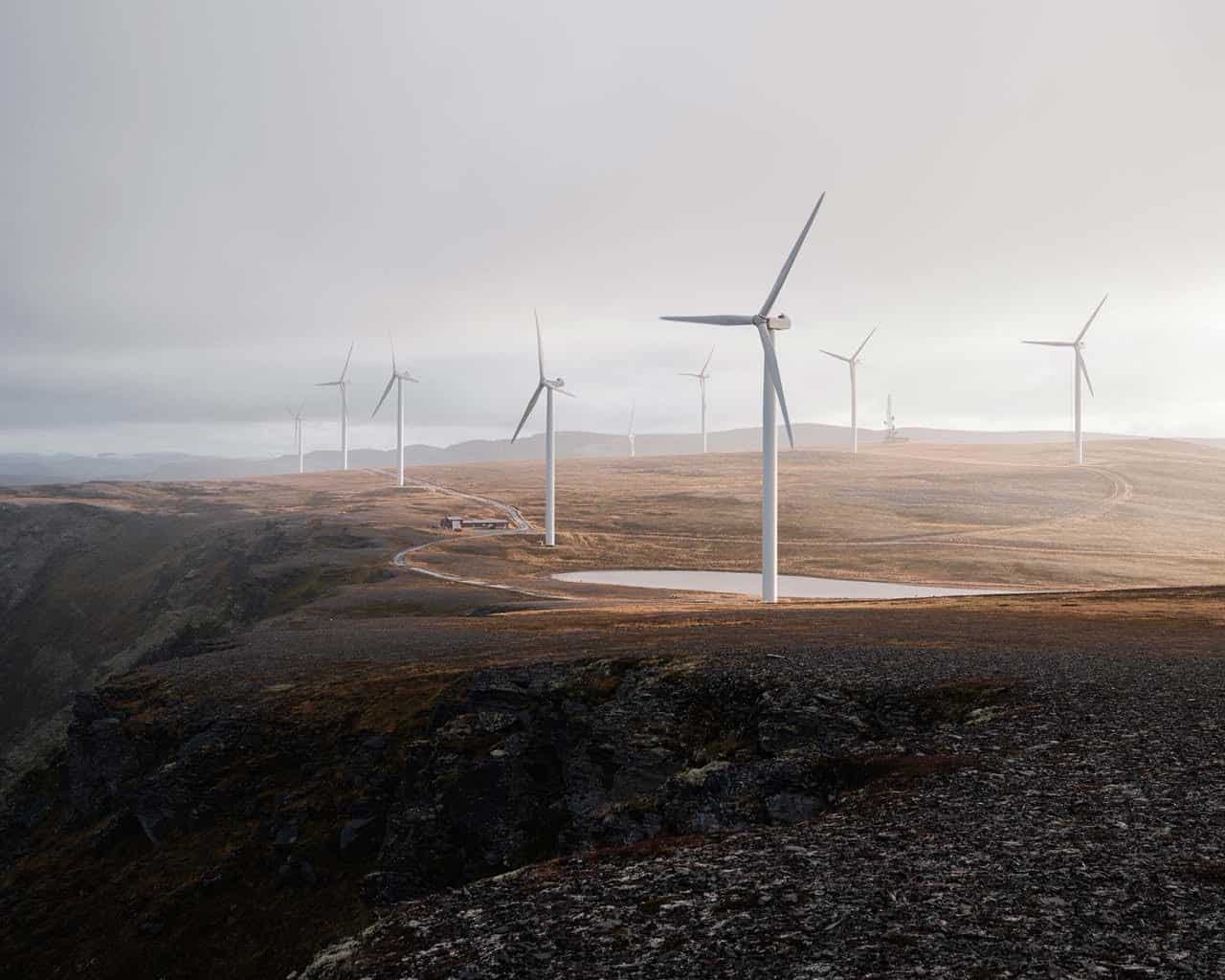
Michałek Siarek, “Good news from the North”
HPL: Your story combines multiple threads, transcending the medium of photography. Have you already settled on the ultimate formula of a project?
MS: Our intention is to create the series in installments, which I dabbled in while working on “Alexander.” However the narrative structure of my previous project was far from episodic, all the inextricably linked threads posed occasional problems. On the other hand, this current story encompasses multiple micro-threads I wish to focus on. Some of those threads might unfurl, whereas other are yet to emerge. Anyway, my attempt to channel the experience of making “Alexander” aims at demonstrating how to tell local stories in the global context, how to define and reach your target audience. What is more, with each subsequent project I want to push the boundaries of my comfort zone, traverse into undiscovered terrains, reinvent the post-Alexander self. My list of passions and issues I’d love to explore in the future is honestly endless.
HPL: How about the title? Any ideas?
MS: Funnily enough, this region has an excellent slogan: “Good news from Norway’s best commune in Norway.” When I heard it, it instantly struck me as the perfect phrase! I ended up tinkering around a bit and finally came up with the working title “Good news from the North.” But the jury is still out on this one.
Michałek Siarek, “Good news from the North”
Michałek Siarek, “Good news from the North”
HPL: You’ve already started shooting on location, recording lots of contextual footage, networking. What’s next?
MS: I approached some of the potential collaborators that would assist me with the implementation of the project in an open formula. We succeeded in enrolling into the pioneering research programme run by the Film School in Łódź called Visual Narratives Laboratory that deals with the development of multiplatform projects, among other things. Alongside Krzysiek Pijarski and the team of experts at vnLab, I’ll be preparing the storyboard until May, merging our isolated stories to build an overarching narrative framework. In this manner, I can stay put and work on individual stories month after month. I’m guessing by the time this interview will be published, I’ll have returned to the Arctic. We had a goodbye party of sorts on the 20th of November – a pilot episode of the web series focusing on the work I’m doing in the north was screened as part of the Fujifilm Poland’s meeting in Warsaw.
HPL: Good luck then, fingers crossed! We look forward to seeing the end results. Thank you for a conversation.
MS: Thanks.
You can follow Michał’s journey through the north on Instagram: http://www.instagram.com/michal.siarek
Interviewed by Helena Postawka-Lech
Michałek Siarek, “Good news from the North”
Michałek Siarek, “Good news from the North”





